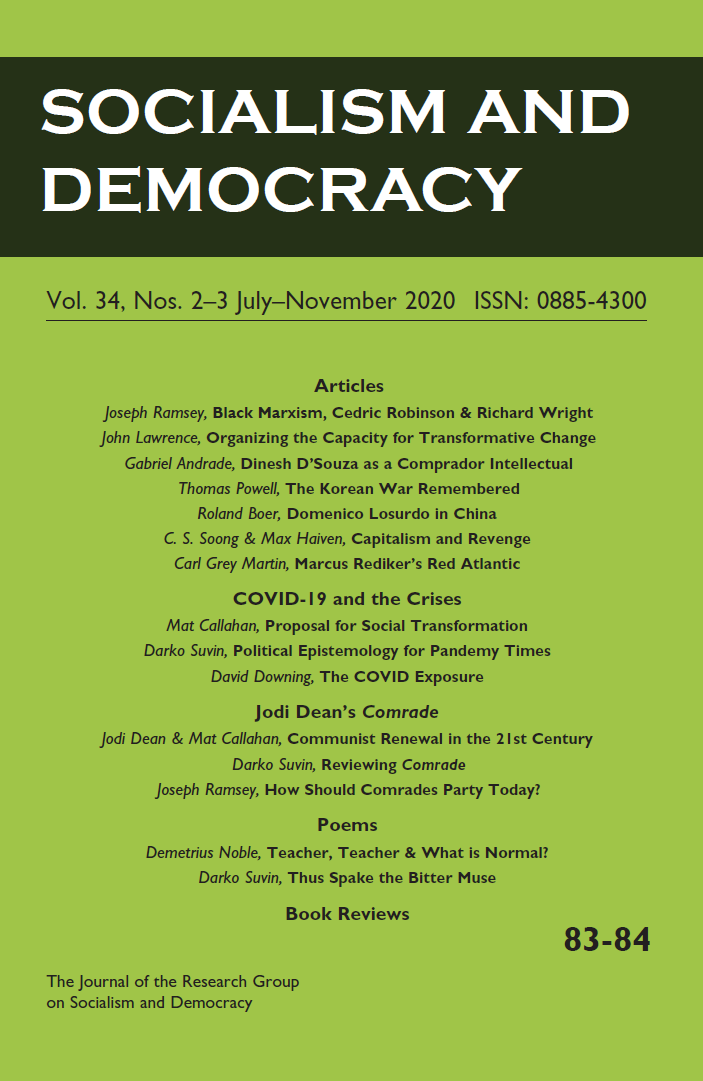Henry A. Giroux, Neoliberalism’s War on Higher Education (2nd edition). Chicago: Haymarket Books, 2020. 237 pages, $19.
In this book Giroux details the devastation wreaked by neoliberalism on major social institutions. This masterful account focuses on the sustained attack on higher education which has occurred in the U.S. since the 1980s. Neoliberalism particularly emphasizes 1) the primacy of market considerations over all others, 2) the privatization of public institutions, 3) the attack on the social wage and the public good, and 4) the extension of the logic of profit to all major social institutions.
Giroux clearly demonstrates the dire consequences for universities and colleges which submit to the corporatization process. Among the most devastating impacts is the attack on the university as a public good. Reducing the university to a corporate service station violates the long-standing ideals of higher education. These ideals include developing informed citizens, exploring controversial topics, and encouraging dissent, as well as developing a commitment to knowledge for its own sake rather than as a commodity which can be monetized.
Over the course of the last forty years, U.S. colleges and universities have increasingly surrendered to the logic of capitalism and have emphasized the commodification of knowledge and the vocationalization of higher education. Areas of study that do not lead directly to a job or cannot be connected to the market have been devalued and resources have been withdrawn from schools and departments in those areas. This is currently happening to the humanities and the social sciences, as business and professional schools absorb more and more of the university’s resources. If current trends continue, why should there be an anthropology or a sociology department? Why teach literature? This cold calculation of economic viability applied to fields of study has debased the university and rendered its critique of society less effective, which has led to a de-emphasis on theory and critical thinking.
Giroux carefully documents how much is lost when the university knuckles under to the logic of capitalism and how the consequences transcend higher education. Universities and colleges play an important role in an economy which is based on the production of new scientific knowledge, and they also serve as sources of jobs in the community.
The author makes a passionate plea to view higher education as an important arena of struggle for a just society and as a key component of a vibrant democracy. In recent years students and faculty have played a significant role in the resistance movement by organizing for racial justice, contesting authoritarian government policies, challenging the military industrial complex, and fighting for gender equality. Historically the university has been a reservoir of dissent and anti-war sentiment, so it is not surprising that over the years there has been a concerted effort to pacify the campus. The book contains valuable insights into how the Trump administration has sought to discipline dissenters by advancing a rancid populism based on anti-intellectualism which has targeted the academy and challenged scientific thinking.
Since higher education both promotes social control and undermines it, universities and colleges are caught in the middle. Giroux suggests that resistance to the status quo still exists in higher education, but the social underpinnings of resistance are increasingly being undermined by running the university like a business. For Giroux, a major part of resisting neoliberalism is the struggle to recapture public education as a public good, and also to reframe the issues in an accessible language connected to the lived experiences of people. The struggle against the corporate university is an important part of the larger struggle against capitalist hegemony.
In a social formation dominated by neoliberalism, the parts of the university which contribute to critical understanding, historical knowledge, and restoring democratic society are often perceived as threatening the existing social order and have become targets for repression. This has led college administrators to submit to the logic of corporatization, to reduce funding to the humanities and social sciences, and to reorient their institutions to be servants to the well-connected and powerful. Consequently, departments that were products of past protest movements--such as programs in African-American, Women’s, Latino, Labor, and Queer Studies--have all faced drastic cuts in their budgets.
Furthermore, the role of faculty in the governance of the university has been similarly attacked by administrative decrees and the casualization of faculty work. Giroux reports that full-time faculty are being replaced by adjunct faculty whose livelihoods depend on being rehired every semester. Adjuncts now make up more than 70% of faculty at universities and, unsurprisingly, they are usually not represented by unions.
Giroux also suggests more broadly that the university has not only been corporatized, but also militarized, as universities and colleges have partnered with the national security/surveillance state. Giroux deserves credit for continually raising the connection between the military and the university as a key issue. This connection is not often considered when looking at how the ideals of universities have been distorted by collaborating with the government. However, the effort to enlist universities into serving the national security/surveillance state has seriously compromised higher education.
In the midst of this concerted campaign to strip the university of its functions as a critic of society and safe haven for dissenters, higher education has been urged by elites to participate in the battle to maintain corporate control over the larger society. As Giroux suggests, the pacification of the university has been accomplished over a long period of time and is a complex process which ends up degrading the work lives of everyone in the institution. Faculty, staff, service workers, and administrators have all in some way been alienated from the traditions, history, collective knowledge, and ideals of the university. This has taken time to unfold but the application of the instrumental logic of capitalism to higher education has seriously undermined the university as an institution.
While life on campus–from the food service to the bookstore to the university police–has been corporatized, Giroux also focuses on how the university has tried to muzzle critics of existing social arrangements. As part of the process of aligning the university with neoliberalism, there has been an effort to marginalize critical faculty and to thwart movements to organize faculty, graduate students, staff, food service workers, and clerical workers. In a corporate university there is no place for unionized workers regardless of the kind of work that they are engaged in.
Especially important in the corporatization of the university is the attempt to silence critics of the social order and to stereotype the university as an ivory tower that is disconnected from the rest of society. Giroux is on point in seeing this attack on the faculty as part of a larger attack on science, knowledge, history, and democratic discourse. He rightly defends the role of public intellectuals in connecting the university to issues in the larger society and serving as the conscience of the institution. This is exactly the reason for the marginalization of these critics of society. Administrators accomplish this task by simply changing the way the university defines its mission and its interaction with the community, as well as by fully embracing the logic of business. While previously universities grudgingly provided space for public intellectuals, they now seek faculty who are interested in commodifying education and fitting into existing institutions. They do not want faculty who challenge students to think critically about society. Instead, they prefer to see students as customers and consumers rather than young adults who could become engaged, informed citizens who advance the cause of social justice.
Giroux’s book maps out the various ways in which higher education has been dominated by neoliberalism’s machinations. It is invaluable as a broad critique of the current path of higher education. At times it paints a picture of an academy dominated by social, political, and economic pressures that seem almost insurmountable. In this view the university appears to be an institution shaped by capitalist logic that has distorted education and the commitment of intellectuals. For Giroux, the university has repressed public intellectuals, aided the politics of disposability, and failed to resist the threat of neoliberal fascism.
Neoliberalism’s War, however, is not all doom and gloom. Giroux offers hope that critical pedagogy and the political praxis of activist public intellectuals, combined with the impact of youth resistance, can lead to a successful challenge to corporate hegemony. He suggests that the current environment creates opportunities to reimagine the possible and suggests that another world is achievable.
Peter Seybold
Department of Sociology
Indiana University/Purdue University- Indianapolis
pseybold@Iupui.edu

